
Part III – Designs
In this article we talk about some of the most used designs in solid wood floors. Which are based on different arrangements of the wooden slats, thus obtaining a diversity of aesthetic effects.
Here as in many other things, imagination and creativity are making their way.
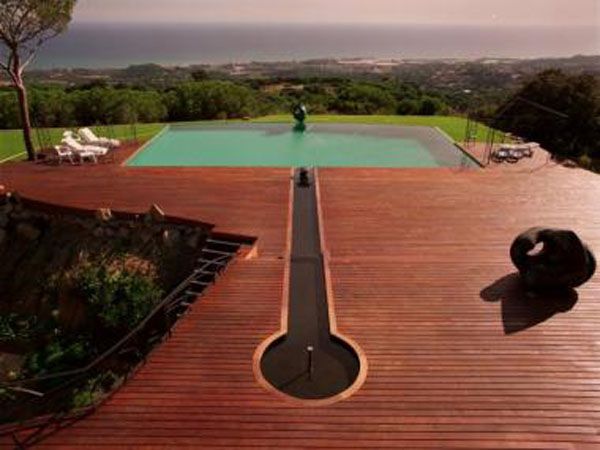
.
parallel designs
In them, all the boards are placed parallel to each other, and they are mainly used in installations such as flooring and floating parquet.
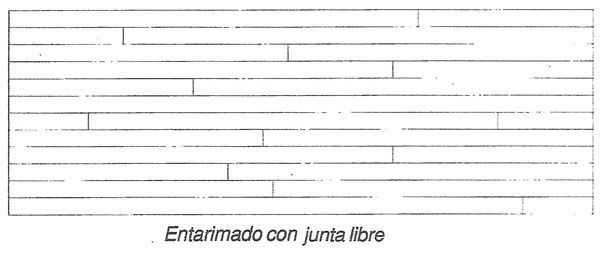
(Figure 1)
They admit various variants depending on the length of the boards and the arrangement of the joints between boards. The most common is the free joint used when the boards are of unequal lengths (Figure 1); and the regular joint used for equal lengths (Figure 2).
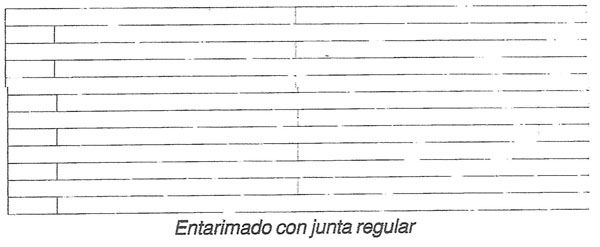
(Figure 2)
.
A particular case of the latter is the English layout, in which the joints of the boards are made to coincide on the axis of the batten (Figure 3). This arrangement is also common in lamparquet installations in rooms where one of the dimensions is much larger than the other, for example in corridors. (Figure 3)
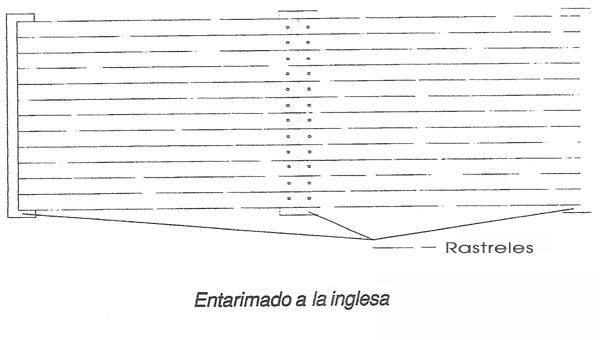
(Figure 3)
.
In pen or spike
In this arrangement all the boards are of the same length and are placed perpendicular to each other. It admits various variants depending on the size of the slat and their groupings (herringbone with three strips, herringbone with four strips). It is preferably used on platforms and lamparquet (Figure 4).
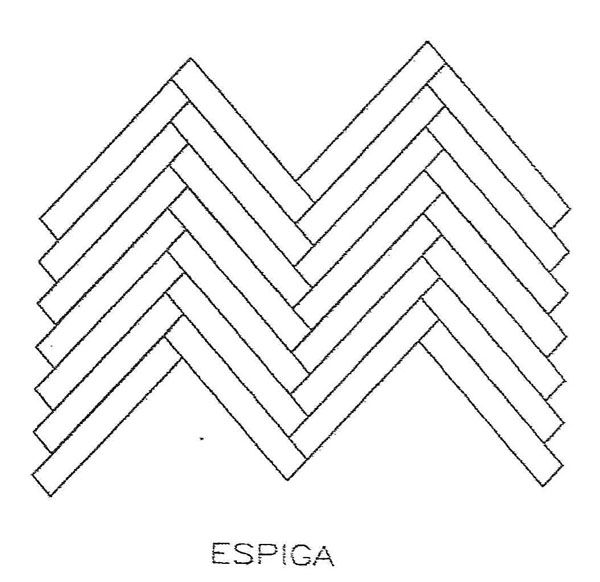
(Figure 4.1)
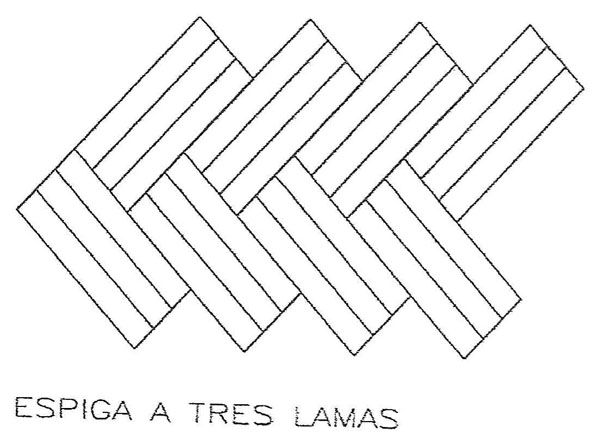
(Figure 4.2)
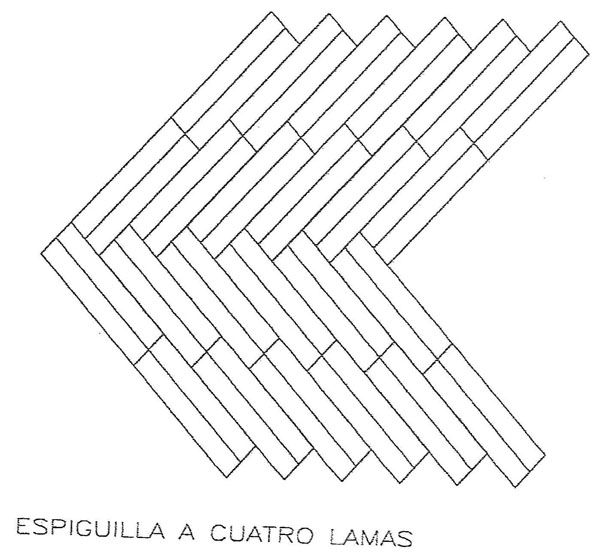
(Figure 4.3)
.
A variant of the herringbone arrangement is the so-called Hungarian point, in which the ends of the boards are finished off at variable angles, generally from 30° to 45°. (Figure 5)
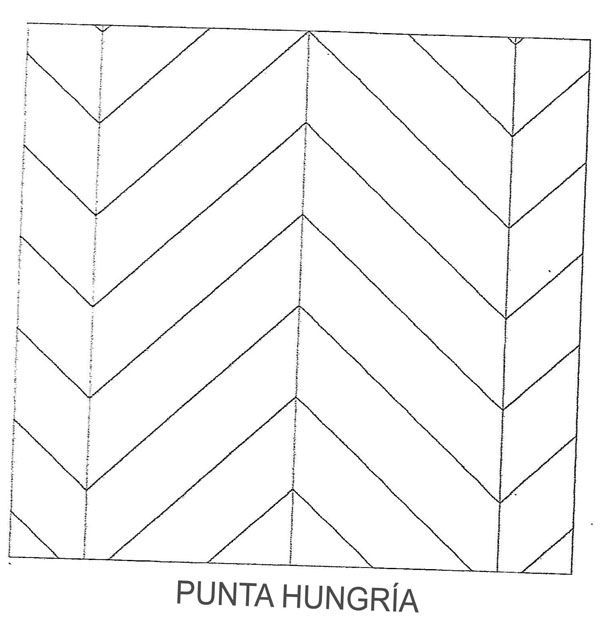
(Figure 5)
.
Lady and checkerboard designs
In this case the boards are all of the same length and in turn this is an exact multiple of the width of the boards. They are grouped in parallel to form squares or tiles, which are then placed so that the grain directions of each two contiguous elements are parallel to each other.
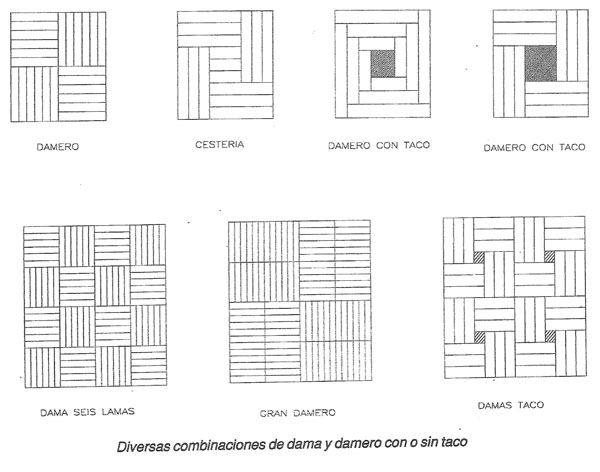
(Figure 6)
It is a layout typical of lamparquet and inlay, although it is sometimes also used on platforms.
A variant is the studded checkerboard in which the tablets of each element are grouped around a square stud, generally made of another type of wood whose color contrasts markedly with that of the surrounding tablets. For example, combinations of oak or white eucalyptus slats with a red eucalyptus block are common.
The denomination lady is usually used when the tablets are of inlay sizes.
Both the checkerboard arrangement and the checkerboard with block allow numerous variants depending on the form of grouping of the slats with each other or of these with respect to the block.
Another very frequent variant consists in arranging the boards or slats in a decreasing length, in multiples of the width of the slat from the outside to the inside, so that in the center of the element there is a square that can be occupied by a block or by slats of smaller dimensions, ( Figure 6).
.
other designs
There are many other geometric figures that enter more into the field of craftsmanship. They are generally dispositions that contain elements close to taracería. Figures 7 include three examples of the most common.
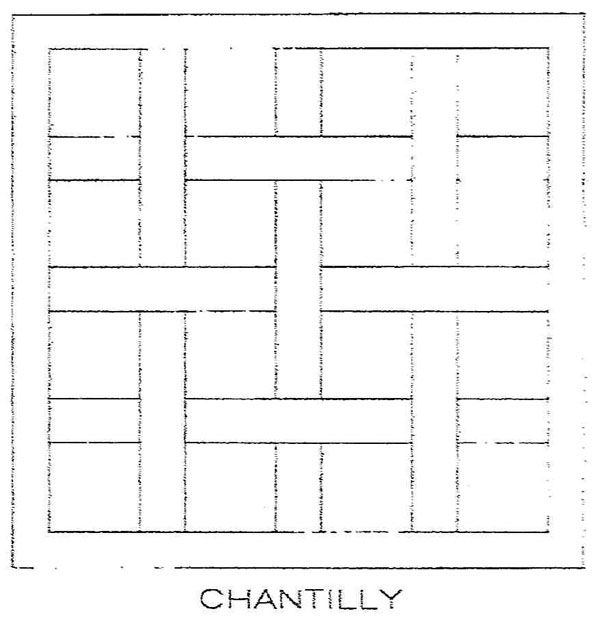
(Figure 7.1)
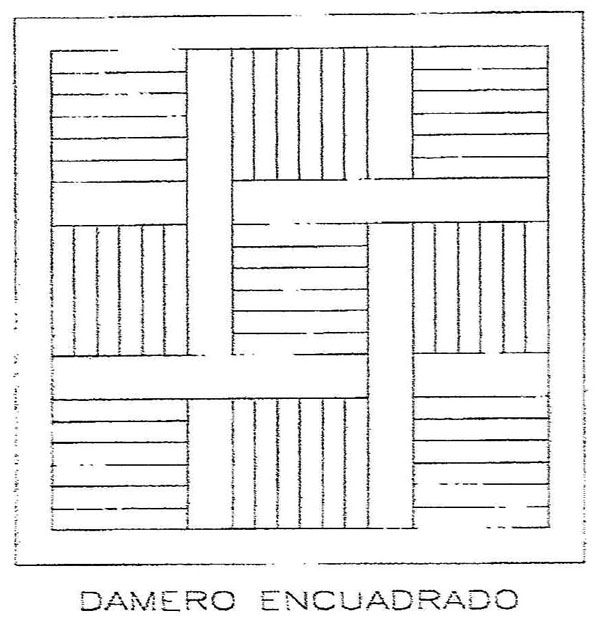
(Figure 7.2)
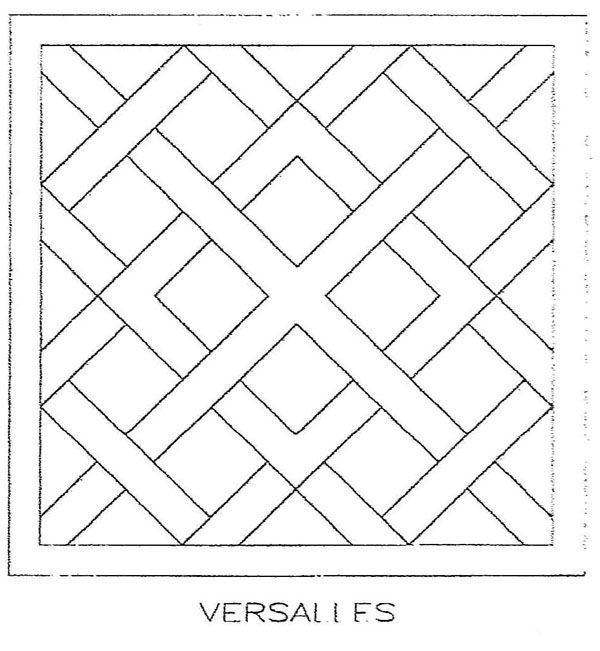
(Figure 7.3)
.
Origin: Guide to wood for construction, design and decoration. AITIM. .


